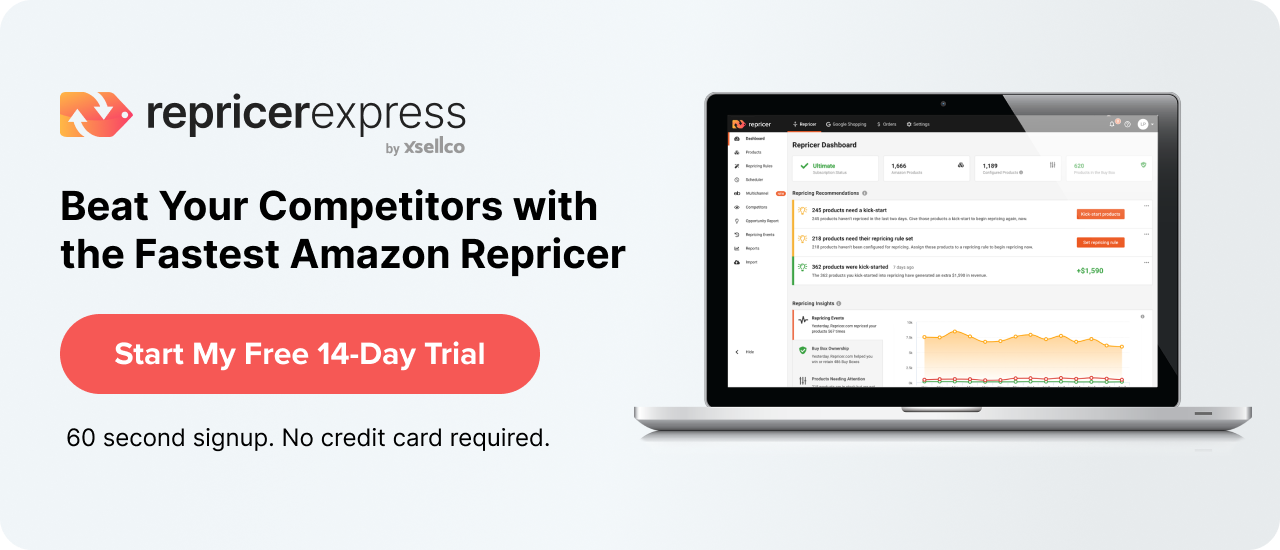Achieving a page one listing for your products on an Amazon search is a little more involved than simply putting together a great sounding listing. Amazon algorithms take a large number of factors into account when ranking your product within its listings. But, with a little extra effort, you can start moving your products up the rankings and land them on the first page of search results. Here are ten ways you can use SEO to boost your Amazon rankings.
1. Get an Understanding of A9
A9 is Amazon’s search algorithm, and the tool they use to help rank products within their search results. If you have a good idea of how A9 works, you’ll be able to make the small changes necessary to help lift your rankings. And, because it’s always changing, you have to constantly be educating yourself and making changes to your product listings.
2. Amazon SEO is Different Than Search Engine SEO
All SEO is not created equal. As detailed in the article, How to Rank Well in Amazon, the US’s Largest Product Search Engine, although something may work well for you in Google, Amazon SEO works differently. Whereas the intention of Google is to provide readers with the most relevant information, the intention of Amazon is to sell products. So, their ranking algorithm is designed to put products at the top that are most likely to be purchased.
There are two factors that Amazon uses to sort search results – performance factors and relevance factors. When looking at performance factors, Amazon wants to know how the product has already performed with customers in the past. They look at conversion rates and sales to determine the success and popularity of a product thus far. Relevance factors help Amazon determine how well a product matches the search being done. This would be figured out by looking at the keywords involved.
3. Keyword Research is Key
It’s only when search queries match the keywords contained within the product listings that a product can be found. The more relevant the match, the higher that product will appear in the rankings. Research what keywords your customers are searching for, and implement those into your product listing. Shoppers generally don’t browse through pages of search results to find what they’re looking for. They want to find the best product quickly, so it’s important that your listing appears on the first page of search results.
Nearly three-quarters of search queries are long-tail keywords because they’re more detailed and specific to exactly what the customer is looking for. Searches for these long-tail keywords also convert at a much more frequent rate than single keywords. Check out Google AdWords for insight into what the most popular, least competitive keywords and phrases are in your area of business.
4. Where You Put Your Keywords Matters
Because Amazon shoppers will generally look in specific places for information – namely the product title and picture, Amazon prioritizes these locations as more important keyword spots. Your product title should include keywords that are immediately relevant. If you’ve got a number of long-tail keywords that detail product use, benefits and so forth, consider putting them into a bulleted list. Any long-tail keywords that can be fit into the product listing can be added in your backend search terms. Although they won’t be visible to those searching, Amazon will still pick up on them.
5. Backend Search Can Be Optimized With Long-Tail Keywords
Although it will take some time and effort to research the most effective long-tail keywords, adding these to the backend of your product listing is well worth it. You can enter up to 1,000 characters in your backend search, so make use of them to add in relevant things customers will be searching for that you couldn’t properly fit into your listing. Spelling mistakes in your keywords can be costly, as your customers will be searching for one thing and you may have typed another. Make sure you check everything you’re sending out.
6. Better SEO Means Better CTR
The better your products are matching with customer’s searches, and the more relevant your product is to what they want, the better your click-through-rates will be. If you’ve properly optimized your SEO and your products are matching up with what your customers want, there would be little reason for them to not click on your listings. Easy Word Count is a handy tool for keeping count of how long the content you’re writing is.
7. Including FBA/Prime in Your Price
It’s not always the lowest priced product that wins in the end, but it’s always a nice idea to offer free shipping with Amazon Prime, through Fulfilment By Amazon, or with a promo code. A bonus with Prime is that shipping isn’t just free, but it’s also extremely fast, generally 1-2 days and sometimes on the same day in certain large cities. This is just one of the instances where optimizing for Amazon means going beyond the keywords included in your listings.
8. Amazon SEO Highly Values Conversion Rate
The number of visitors to a page, versus the number who make a purchase will determine the conversion rate of a product. The higher the rate, the more likely that product will be purchased when someone clicks. For this reason, Amazon highly values the conversion rate a product has because it’s a good indicator of how well that product resonates with customers. Because Amazon’s main goal is selling products, it will generally rank products with better conversion rates higher than others converting at a lower rate.
9. Images Are Important to Amazon
Many times, a shopper’s decision on whether or not to buy a product can be persuaded by a picture. If a product is lacking a picture, there’s a good chance the customer will pass on buying it. They want to get a good idea of what they’re buying, not just from a description, but from a picture. Pictures of the product being used or worn, different angles and close-ups all help to give a shopper a better understanding of what they can expect to receive. And, even if you’re not a graphic designer, you can use Canva to create amazing images for your product pages.
10. Reviews From Other Customers Are Still Valuable
Although Amazon does not use reviews for optimization anymore, they are still an important component to have on your product pages. They can definitely influence your conversion rate, which would then impact how Amazon ranks you. Customers always want to hear what others have to say about the product they are about to buy – both the good and the bad. For the negative reviews, remember that there’s always an opportunity for you to respond to them and possibly remedy the problem that was experienced. When you’re responding to negative reviews, always keep thing professional, courteous and well-written.
Final Thoughts
As the go-to ecommerce store for nearly everything, Amazon is the place to be if you want to sell your products online. But, you’ve got to effectively optimize those products in order to get the most out of Amazon, by landing on the first page of search results.
Related: 21 Ways to Rank Your Product Higher on Amazon






